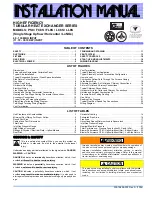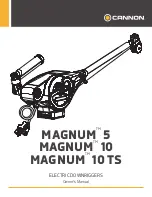
Wave Driver
(WA-9855)
Features:
Drive post
Rod clamp
Fuse holder
Banana jacks
Included equipment:
• Wave Driver (WA-9855)
• Elastic cord
• Extra fuses (2)
Required equipment:
• Banana Plug Patch Cords (SE-9751)
• One of the following function generators:
- 550 Universal Interface (UI-5001)
- 850 Universal Interface (UI-5000)
- Sine Wave Generator (WA-9867)
- Function Generator (PI-8127)
Introduction
The Wave Driver is a strong, long-throw speaker with an
attached drive post. The top of the drive post has a slotted hole
into which the included elastic cord can be directly inserted. The
speaker will vibrate at any frequency from 0.1 Hz to 5 kHz, with
amplitudes up to 7 mm peak-to-peak at the low end of the
frequency range.
The Wave Driver allows you drive wave experiments with ease
and accuracy. You will need a function generator with an
amplifier capable of producing a minimum of 8 V at 0.5 A. (The
Recommended equipment section lists function generators
provided by PASCO which meet this requirement.) The
waveform need not be a sine wave; other waveforms such as
square, triangle, or sawtooth can be used.
You can attach a wire or string to the Wave Driver directly, either
by inserting the wire or string directly into the slot on the drive
post and tying it off to a support rod, or by threading it into the
hole beneath the slot and tying it to the post itself. Other
accessories can be connected to the Wave Driver by inserting
their plug directly into the hole on the end of the drive post.
The Wave Driver is designed to sit upright, resting on the rubber
"feet" on the base. It can also be mounted on a rod up to 12 mm
(1/2 in) in diameter in either a vertical or horizontal position
using the rod clamp. The bottom of the wave driver also includes
a hole which can be used to mount the sensor upright on any
1/4-20 threaded rod. (See Figure 1.)
Figure 1. Options for mounting the Wave Driver
Operation
1. Connect the string or experimental apparatus to the drive
post by either of the following methods:
a. Tie the string or wire directly to the drive post, as
shown in Figure 2.
b. Insert the string or wire into the slot on top of the
apparatus, as shown in Figure 3, so that it is held in
place by friction. Tie the end of the wire or string to a
support rod.
Figure 2. Direct attachment to the drive post
Figure 3. Attachment to a support rod through the drive post
Product Guide | 012-17424A
1





















